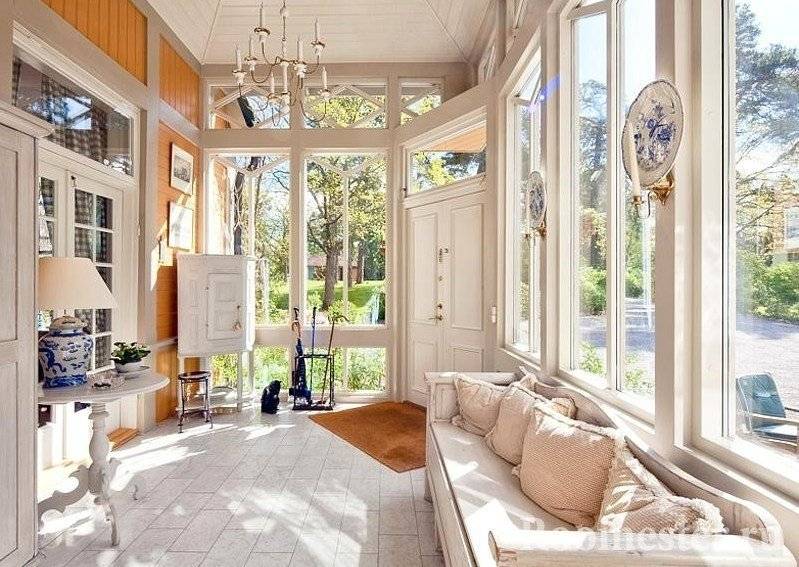Requirements for materials
One of the main tasks is to create a coating that does not allow heat to pass through and protects against drafts. At the same time, the walls must breathe, otherwise in the cold season it will be stuffy and uncomfortable inside, especially when the radiator is on. The vent valve may solve the problem. Such devices are usually used in urban apartments where impermeable plastic double-glazed windows are installed.

If the house is intended for year-round living, the covering will be required to have good thermal insulation properties. It is advisable to put a layer of thermal insulation under the finish, covering it with a film that does not allow moisture to pass through. Without such protective measures, water will penetrate into voids and begin to destroy the material, expanding when it freezes. The room will smell damp, and mold may appear in the corners.
If the building on the garden plot is used only in summer, the outer finishing layer must still have good waterproofing properties and reliably protect brick, concrete or wood from getting wet.
One of the most important requirements is fire safety. For a log house or a structure made of timber, you can allow a loosening, but still it is worth making a choice in favor of a non-combustible coating. In the event of a fire, it will hold back the flame and may possibly save the lives of people in the building.
Environmental friendliness and non-toxicity are important qualities. The coating must not cause allergies. If it has a pronounced chemical odor, it should never be used. Even in an open room it will be impossible to get rid of such a "aroma". When burned, the material will most likely give off toxic gas. Unscrupulous manufacturers try to sell their goods as quickly as possible. Usually it is sold in markets where no one monitors the quality, and is very cheap, therefore, it is better to purchase it in hardware stores, where the quality of the product is beyond doubt. At the same time, the price serves as one of the quality indicators.
The cladding is required to maintain its properties despite frost, rain and exposure to ultraviolet radiation. If you plan to paint it, it is better to choose the most resistant formulations.
How to choose a material?
- Wooden material. This includes the beloved lining and more expensive types of finishing material with wood-composite components. One of these, actively used when performing outdoor work, can be called decking - in another way it is also called a terrace board, garden parquet or deck board. This is the best wood material that allows you to make high-quality repairs to the veranda for many years. You can make an equally high-quality finish both inside and outside with planken (front planed board) from ash or larch. Such materials do not require any additional processing, except for the usual impregnation with antiseptic compounds, and will serve qualitatively for a long time. Although the quality is significantly reflected in the price of such materials.
- MDF. The panels are well-known and beloved by the people for their affordability and variety of colors. They are quite suitable for decoration in any style of a veranda in the country. Their design is uncomplicated, but they allow you to hem any wall, even not quite even one. MDF panels are easy to clean, do not collect dirt on themselves, they are simply assembled by hand and are cheap. Minus one - not suitable for work outside.
- PVC. PVC panels are made for indoor use and for cold room decoration. The ceiling on the veranda is perfectly hemmed with PFH panels, and some craftsmen use this material even for the exterior cladding of houses. And although PVC does not have the characteristics of siding, PVC sheathing holds up well outside if handled carefully. Although, by its main purpose, the PVC panel still belongs to the category of materials for work inside, and not outside the building.And a wide range of PVC panels with imitation of natural stone, wood, textiles and even metal allow you to create an interior and design in any style, making the repair of a veranda in the house or in the country quick and inexpensive.
- Drywall. An excellent material if you need to decorate the room after insulation. With drywall, you can hem not only the ceiling, but also the walls on the veranda, hiding under it all the insulation materials and wall errors. Currently, moisture-resistant gypsum board is being produced, which can be used outdoors, while all the material is easy to install, non-combustible and environmentally friendly, and allows you to perform a variety of types of finishing.
- Siding. It is one of the most practical, inexpensive materials. The variety of colors imitating stone, blocks, wood cladding, as well as the fact that siding does not burn, does not rot and lasts for a long time, make it one of the most popular and popular materials at the present time.


Timber look finish
General requirements for the summer extension
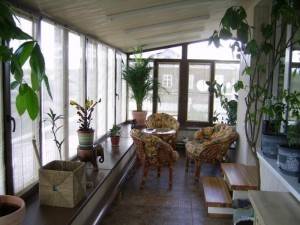
Enough roomy veranda
The veranda is that part of the house where the owner can express himself to a greater extent than when decorating the main premises. For a veranda, like a porch, is a room that is not connected with the whole house by a heating system, free in choosing a design plan, and finally, it may have practically no walls (in a summer open version). In general, there is room for imagination. But it is precisely the independence of the veranda from the main structure that requires adherence to special rules, whether it be a veranda in the country, in a private house or in a chic country cottage.
The summer veranda should be:
- made of high quality materials with increased moisture resistance;
- resistant to temperature extremes;
- harmonious with the main building and continue it, and not contrast with it in terms of architectural design and interior decoration of the premises;
- roomy enough to equip a family recreation area.
Exterior and interior decoration of the veranda
A modern country house is designed to provide the best living conditions in it. At present, all the conditions have been created for this - an abundance of design solutions in housing construction, a lot of traditional and new proven materials.
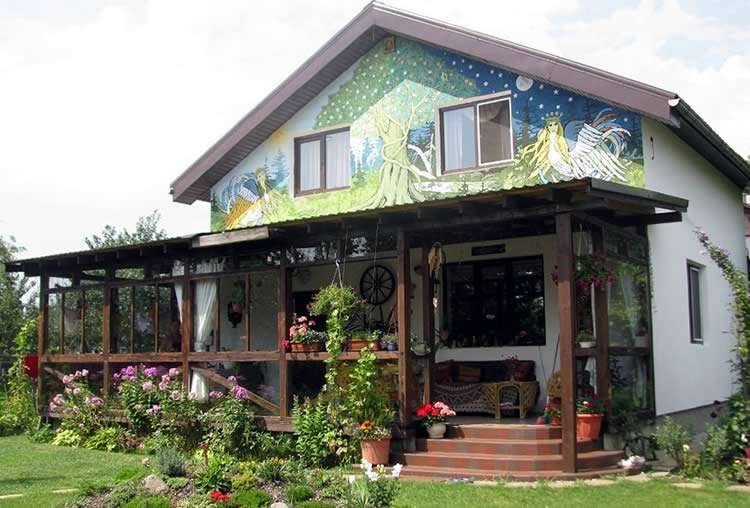
Currently, one of the elements of private buildings is a terrace - a fully or partially open area equipped with a roof. It allows you to fully feel like a part of nature, practically without leaving your home. What materials and in compliance with what requirements can be used to decorate the terrace, and will be discussed in the future.
Users often search for:
Cold Veranda Material
It is quite difficult to choose how to sheathe an unheated veranda inside. There are not many finishes that can be used inside a cold, unheated room. Most often, the list is limited to plastic panels, waterproof brands of OSB boards and coniferous lining.

The main problem that owners of unheated premises have to face is condensation that regularly emerges on the surface inside the casing. Therefore, you should not try to sheathe the walls of a closed veranda with materials made of cellulose fibers, primarily fiberboard and MDF. Even when painted with enamels or varnished, they swell quickly, which leads to warpage and breakage of fasteners.

The best option is PVC panels. They do not rot, do not absorb moisture, the choice of colors is simply huge, and all this wealth will be relatively inexpensive when compared, for example, with clapboard made of oak or cedar.
If desired, the veranda from the inside can be sheathed with plastic with a pattern imitating valuable wood species, natural stone, or just a plain color scheme that matches the interior of the room.
For finishing with polyvinyl chloride, the walls of the veranda will first need to be sheathed with a supporting frame made of a galvanized profile. Metal profile strips are nailed to the walls in increments of no more than 60 cm. The easiest way is to sheathe the veranda with vertical PVC strips, in this case the profile is nailed in horizontal rows.

The walls of the veranda facing the street, before being sheathed with panels, are insulated with isolon or foil-clad polyethylene, this is inexpensive and effective. Internal warm walls can be sheathed with mineral thermal insulation with a gasket inside a layer of a vapor barrier membrane. In this case, it will be necessary to organize additional ventilation of the room, since plastic, like glass, creates an increased level of humidity from the inside.
For giving, the problem of condensation is especially relevant during the onset of cold weather. After the owners move out with the first frost, a large amount of water vapor accumulates through the walls, they must be removed by flow ventilation until the low air temperature turns into frost on the walls inside the room.
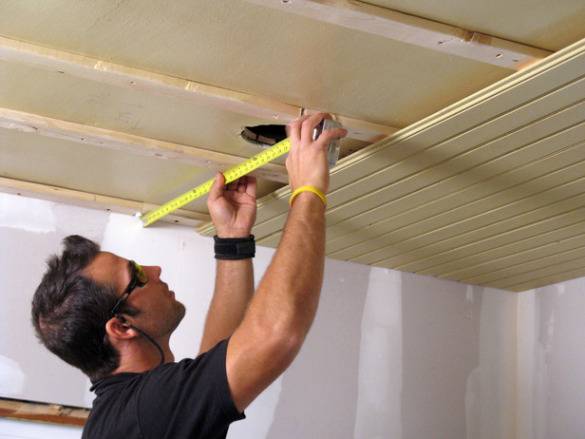
The choice of polyvinyl chloride to sheathe the inside of the veranda of the house cannot be considered particularly successful. Plastic always remains flammable; at low temperatures, an accidental shock by a chair or an inadvertent impact can lead to cracking of the material.
Therefore, if it is possible to buy inexpensively lining made of oak or larch, it is better to sheathe the room inside with wood, which will last for several decades.
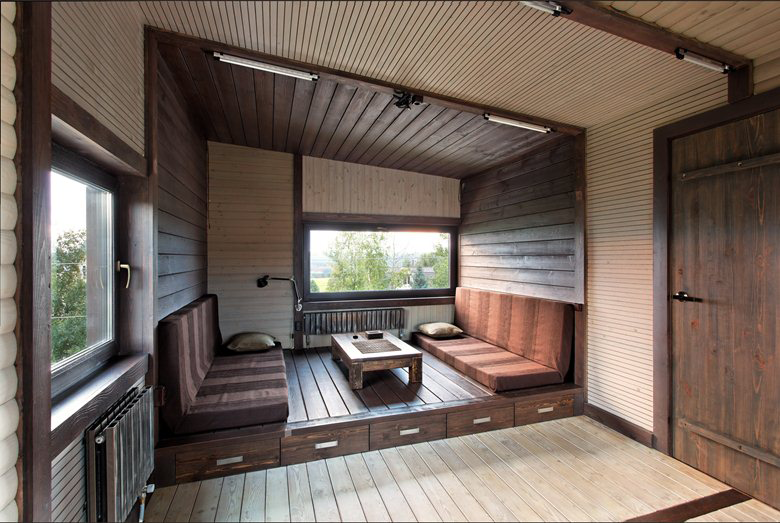
How to decorate the walls on the veranda inside
A good decorative finish of the summer cottage veranda will delight the owner for many years. Here, the requirements for appearance are less stringent than when choosing an exterior finish. A veranda is an isolated room that is not connected with other rooms in the house, which means that the interior here can be radically different from other rooms. How to decorate the walls on the veranda? Let's talk about the most popular options.
Wooden lining
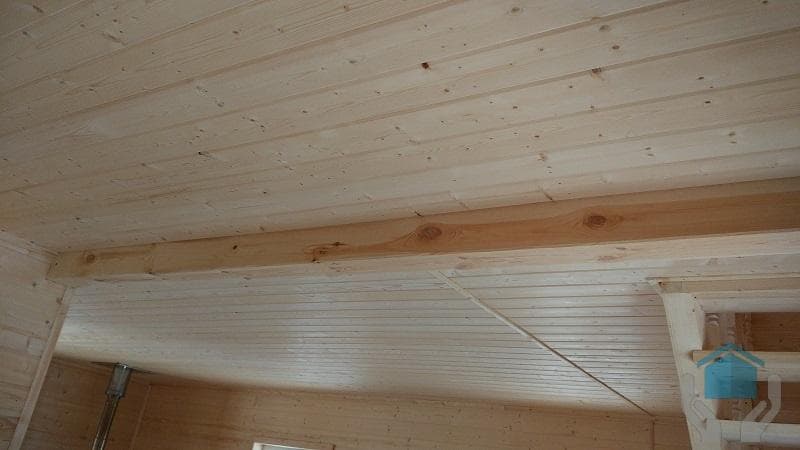
The material is a thin sheathing board with thorn-groove fastenings. There are 3 types of wooden lining according to DIN 68-126 / 86:
- "Standard" - with a trapezoid section.
- "Calm" - with rounded corners of the board.
- "Europrofile" - with a rounded profile and a large spike.
Dignity
- ease of installation thanks to the “thorn-groove” system;
- environmental friendliness, thermal conductivity;
- resistance to rotting, mold formation.
disadvantages
The lining for wall cladding in an unheated room must be of high quality: not lower than grade "A".
The cost of wooden lining: from 450 rubles per 1 sq. meter
Decorative plaster
Interior decoration of the veranda in the country with plaster is a universal method, suitable for both heated and unheated premises. In the first case, you need to use ordinary or heat-insulating plaster for interior work, in the second - facade plaster. By texture, you can get different types of plastered surfaces:
- Plain or Structural - Smooth, flat surface for painting or other finishes.
- Textured - a tinted surface with different textures such as "bark beetle", "waves", "textiles", etc.
- Venetian - the surface imitates a cut of natural stone.
Advantages of plaster
- a large selection of textures and colors;
- durability - service life up to 10 years;
- excellent performance;
- affordable price.
disadvantages
Decorative plaster requires preliminary leveling of the walls, therefore, having chosen this option, keep in mind that repairs in the country can be delayed due to the puttying process.
The cost of plastering with leveling: from 600 rubles per 1 sq. meter.
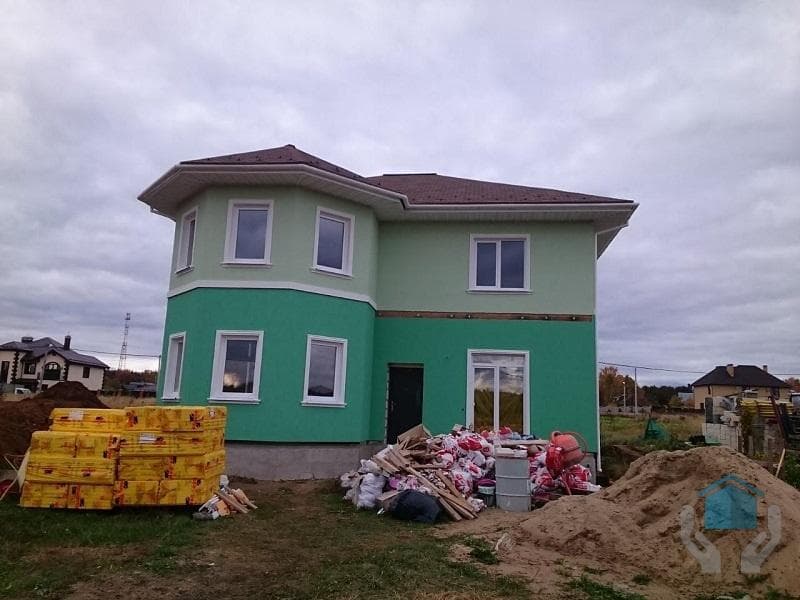
MDF panels
Fiberboard (MDF) is an inexpensive material for finishing work, but it is only suitable for a heated veranda. This also applies to such wood materials as chipboard, chipboard, fiberboard, etc. For wall cladding, you need to buy MDF panels with a density of at least 600 kg / m3, produced in accordance with GOST 32274-2013.
disadvantages
- contain formaldehyde and resins;
- mounted on a crate;
- service life - no more than 5 years;
- high level of moisture absorption.
The cost of MDF panels with a crate of wooden glazing beads: from 250 rubles per 1 sq. meter.
Drywall and PVC panels
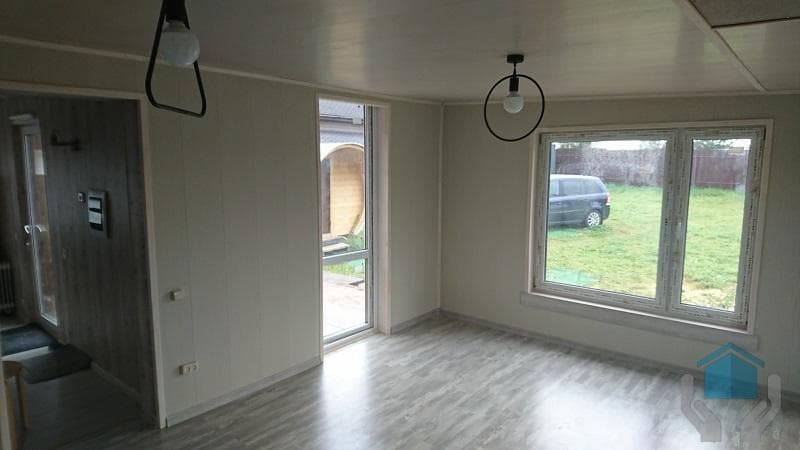
Gypsum plasterboard is a layered material based on dry plaster. PVC panels - sheet products based on polyvinyl chloride (plastic). Both materials are distinguished by their low price and are suitable for those who want to invest a minimum of funds in repairs in the country. Despite the different composition, drywall and PVC panels have similar advantages:
- more than affordable price;
- a large selection of colors;
- ease of installation and maintenance.
The disadvantages of the materials are different:
- drywall - low moisture resistance (except for moisture-resistant gypsum board) and low strength;
- PVC panels - when heated, emit toxins, fire hazard.
The cost of plasterboard cladding is from 200 rubles per 1 sq. meter, PVC panels - from 100 rubles per 1 sq. meter.
Siding for veranda cladding
It is a unique material that is designed for outdoor use. It has all the benefits we talked about above. At the same time, there are several types of siding:
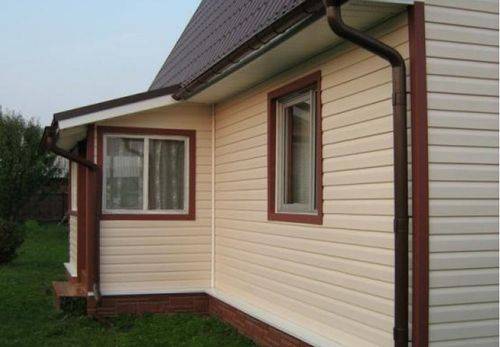
Most often, the last two options are used in verandah finishes. The installation technology is somewhat reminiscent of lining, since here you also need to build a frame and fix the siding to it. But, in the work there are some details and subtleties that are different. The material itself is very decent and is widely used for cladding not only verandas, but also houses in general.
Here are the benefits of siding:
- Long service life (50 years minimum).
- Has an excellent appearance and a variety of colors.
- Easy to operate, easy to wash, no need to paint or repair.
- It is lightweight and flexible.
- It is versatile, you can choose the material of manufacture yourself.
- Installation is pretty straightforward.
- It copes well with temperature extremes and harsh weather conditions.
- It has openings for ventilation and condensation drainage.
- The veranda cladding material will not rot and be attacked by insects.
- Durable, practical and non-fading.
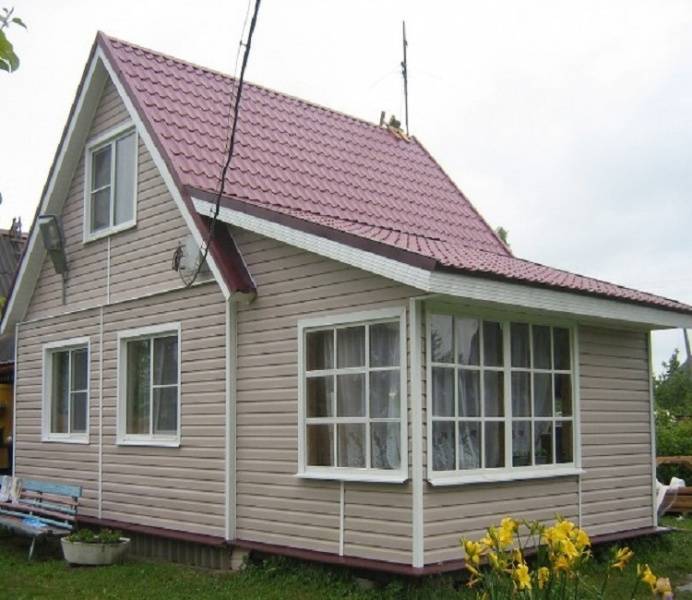
Due to its advantages, siding occupies a leading position among other cladding materials. Although, like everything, it has some disadvantages:
the material cannot be called environmentally friendly, although this is not so important for covering the veranda from the outside.
vinyl products burn very well, emitting harmful and toxic smoke;
vinyl products for the veranda become fragile at low temperatures;
metal siding is easy to damage. By bending it once, you will not return it to its former appearance;
wood siding has a short lifespan .. You can see the installation of siding from this video:
You can see the installation of siding from this video:
Flooring
The final chord in the design of the veranda is the choice of flooring. The options can be as follows:
- terrace board;
- tile;
- rubber;
- linoleum;
- cement.
To finally make a choice, think about whether you will walk barefoot or in shoes on the veranda. In addition, carpet or carpet can be laid on the floor in the veranda.
Terrace board
Decking is essentially processed lumber. This is a three-layer construction:
- Bottom layer. This is a cover with ventilation slots.
- Middle layer. There are cavities here that allow the wood to expand without deforming the overall structure.
- Upper. This is the face of the board, so it is smooth.
This material has many advantages:
- the board is easy to mount;
- the floor is not much different from wood;
- the coating is durable and heat-absorbing.
Tile
The stove is a difficult material to install. But the difficulties justify themselves, since the tile has the following positive qualities:
- it is shockproof;
- easy to clean and withstands rainfall;
- differs in a variety of design.
Tile installation is carried out according to the following steps:
- First, the surface needs to be leveled.
- Then the screed is carried out.
- Preparation of materials. You will need special tile adhesive.
- The tile is leveled. Special crosses must be installed between the corners in order to align the dimensions of the seams.
- Then mask the joints with a special grout. If grout gets on the tiles, don't worry. It will be washed off the surface, but will remain in the gaps.
But there is one difficulty - cutting. This must be done if the room has non-standard dimensions. This operation is almost impossible to do without a tile cutter, although you can try to replace it with a grinder.
Linoleum
If the classic wall decoration in the veranda is lining, then for the floor - linoleum. The coating is made of polyvinyl chloride in combination with polymers. The advantages of the material include:
- waterproof (but only if fastened in one piece);
- impact resistance and wear resistance;
- ease of installation and maintenance;
- huge assortment;
- low cost.
Even a non-professional can do the editing of the material. The main thing is that the floor surface is sufficiently flat. Next, you need to roll out the roll, align it and fix it near the baseboard. If the linoleum has been cut, individual sections can be held together using a special strip. But due to the fact that the material passes cold, you need to use insulation.
Rubber
The rubber covering is the rubber used to cover the floor. On the market, it is represented by slabs or monolithic blocks. Of the positive aspects of the material, one can single out:
- impact resistance;
- absolute waterproofness;
- resistance to temperature changes;
- phenomenal durability;
- a wide range of design solutions.
It is important here that the floor is level. To connect the plates to each other, you need polymer glue.
The installation procedure resembles working with ordinary tiles. But in this case, crosses are not needed, because the plates fit more tightly. If rolled rubber is used, the joints are sealed with a soldering iron or a hot air gun.
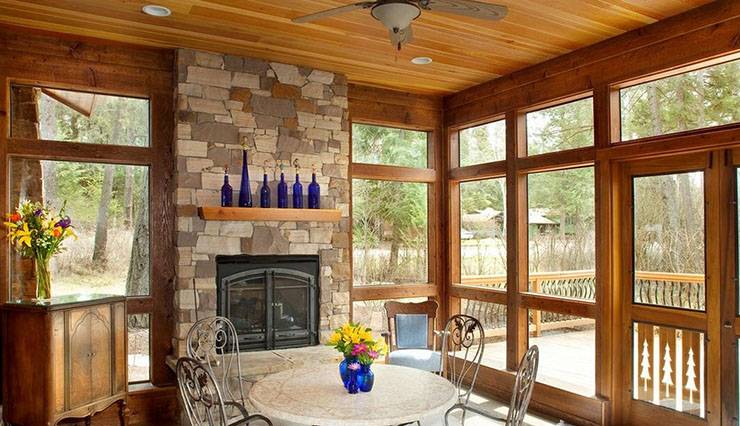 Rubber has its own nuances
Rubber has its own nuances
Cement mixtures
You can finish the floor in the veranda in a standard way using cement. Despite the banality, the option remains the most labor-intensive. At the same time, such a floor can be laid even on a monolithic foundation. As a result, you will get coverage that is different:
- shock resistance;
- waterproof;
- resistance to temperature changes.
It does not require careful maintenance. True, after the cement mixture is installed, it must be polished to a shine with a special machine.
There are many other versions of finishing materials such as OSB slabs or self-leveling floors, but all of them are in less demand among consumers.
How to decorate a glazed veranda inside

If we talk about the interior decoration of the glazed veranda, almost any solution is possible here.
Decorating an interior in a glazed veranda is about the same task as decorating a loggia. But the veranda is usually a more spacious room, therefore, there are more opportunities for design here.
Let's figure it out in more detail:
- The veranda is a construction that is considered summer. But nothing will stop you from making heaters here and using the space throughout the year, not only in the summer. In this case, you can safely use a variety of finishing materials here;
- A great example of how you can organize the interior design of the veranda. Stained-glass windows are installed, the roof of the structure is made of glass - due to this, the room will always be flooded with the sun.
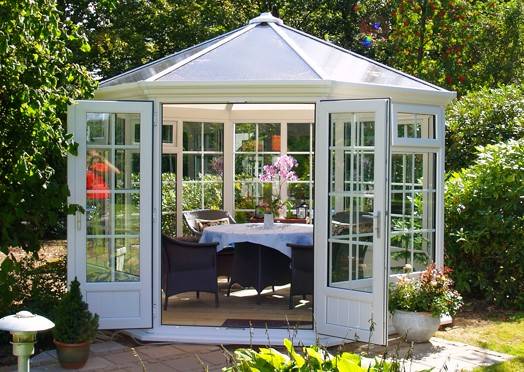
Lovely veranda with glass trim (including roof)
- A worthy addition to the interior decoration of the veranda is curtains of some original color or unusual blinds. Of course, the design of the ceiling on the veranda depends entirely on how the roof is made;
- In addition to wood, in the decoration of the veranda ceiling, you can safely use MDF, plastic, make plasterboard filing, paint. Many decide on facing the veranda with polystyrene tiles. False ceilings and much more will look worthy here.
See more on how to decorate the veranda in the video. This material will be useful for both experienced decorators and novice builders who just want to improve their veranda.
The decor of the walls on the veranda can be done in different ways, but most often they make a choice in favor of light colors. The floor in such a room can be done by anyone - at least use parquet, at least lay tiles. If you want, for example, you can cover the floor with a carpet under the baseboard - right around the entire perimeter of the room.

If the veranda is solid, it is easy to store upholstered furniture here. This is possible only when the finishing is done with high quality.
Upholstered furniture on the veranda, if it is properly finished, will also never be superfluous. After all, a comfortable stay is hardly possible if there is no comfortable chair or comfortable sofa at hand.
Interior decoration ideas
The carefully thought-out interior of the veranda will give the building a special look, because from an unsightly room you can make a real corner for creativity, a summer kitchen and even a playground with a mini-pool. Consider the best interior decoration and design ideas:
- for the "rustic" country style, wicker ceilings made of veneer, bamboo or thin plywood sheets are suitable. The wood planks of the frame can be coated with a darker lacquer to contrast the materials with each other. A chandelier can be made in Eco or Modern style;
- with the help of tiles, you can beautifully pave the floor, combining elements of different colors and sizes, creating a feeling of light deliberate negligence. Tile pieces also look great in an elegant pattern or print. True, before starting work, you will have to prepare the flooring well, level it so that the material does not crack and deteriorate during operation;
- linoleum is good because it is shockproof and inexpensive. In addition, it is possible to choose any color and pattern, even imitate wood or stone. You can always lay a soft carpet on the cold floor;
- here you can arrange a guest room with separate beds and cozy decor. The ideal solution would be to install ceiling fans that can save you from the heat in the summer;
- a hammock will look great on the veranda, in which both households and guests can calmly rest and relax. This option is more suitable either for an open-type extension or for a room with glazed walls;
- a separate master bedroom with a large bed - a great opportunity to wake up with the sunrise. Decor and furniture items are suitable in light shades with wrought iron elements and ruffles in a romantic style;
- stone cladding looks beautiful: raw natural stone is successfully combined with large frames, beams and wide windows. It is better to decorate the room in oriental or Country style;
- an ideal option for a summer residence and a country house would be the arrangement of a space for receiving guests or a spacious dining room inside the veranda. In this case, you can install wide windows with panoramic views and even make the ceiling transparent. Part of the roof can be glazed with polycarbonate, and blinds, light curtains or roller blinds can be hung on the window openings.
The interior arrangement of the veranda must be well planned, depending on the functions that it will perform in the future. Indeed, for each room, certain furnishings, decorative elements and equipment are suitable.
Decorating the veranda with clapboard, photos, tips
Lining is one of the simplest materials, characterized by wear resistance, good qualities for damp rooms, and undemanding to care.
The advantages of finishing the veranda with clapboard include its following qualities:
- The lining is easy to install, allows you to create a smooth, even wall due to its own texture,
- It is an excellent sound insulating material,
- Differs in durability and convenience of replacing damaged areas if necessary.
Decorating the veranda with clapboard inside (photo) gives great prospects in terms of the choice of colors, neat and easy installation, but the lack of clapboard in fragility, especially in the cold season.
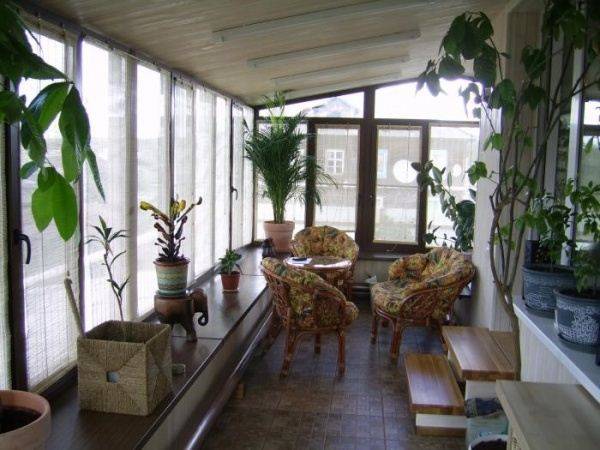
Decor items
Placement of bright accents is allowed based on the purpose, style of the room. Pictures and art objects are an interesting decoration of the room. Curtains, blankets, carpets, pillows, and some other textile elements appear as bright spots of the interior. The latter should be selected especially scrupulously - the interior must look complete.

The pastel colors of the room should not be diluted with bright colors. It is advisable to select those already present - the action will help to achieve balance. It is necessary to select based on the style of the veranda, since each direction has its own specific colors:
- Provence (lilac, lavender, lilac, pale green, blue, turquoise, blue, lemon, milk, white);
- classics (white, brown, wine, chocolate);
- minimalism (the main color is white, other unobtrusive halftones);
- eclecticism (bright colors, identical unusual flashy shades);
- baroque (red, wine, cherry, scarlet, gold, burgundy, yellow, brown, orange);
- hi-tech (steel, gray, white, black, cold gray-blue);
- eco-style (natural colors: white, green, brown, straw, light green, gray, wet asphalt, brown).
Unusual lampshades, lamp shades are suitable here. A practical interior solution is a harmonious selection of accessories of a suitable style direction. The popular styles are: classic, baroque, provence, modern, Mediterranean, colonial, Scandinavian styles, minimalism, eco-style, eclecticism, country, loft, high-tech. Country is considered the most appropriate. He will decorate a wooden house, a pompous American colonial cottage. It is appropriate to complement the interior with a fireplace, wicker furniture, solid carpets, colorful accessories, exquisite souvenirs - you will get a cozy place.
